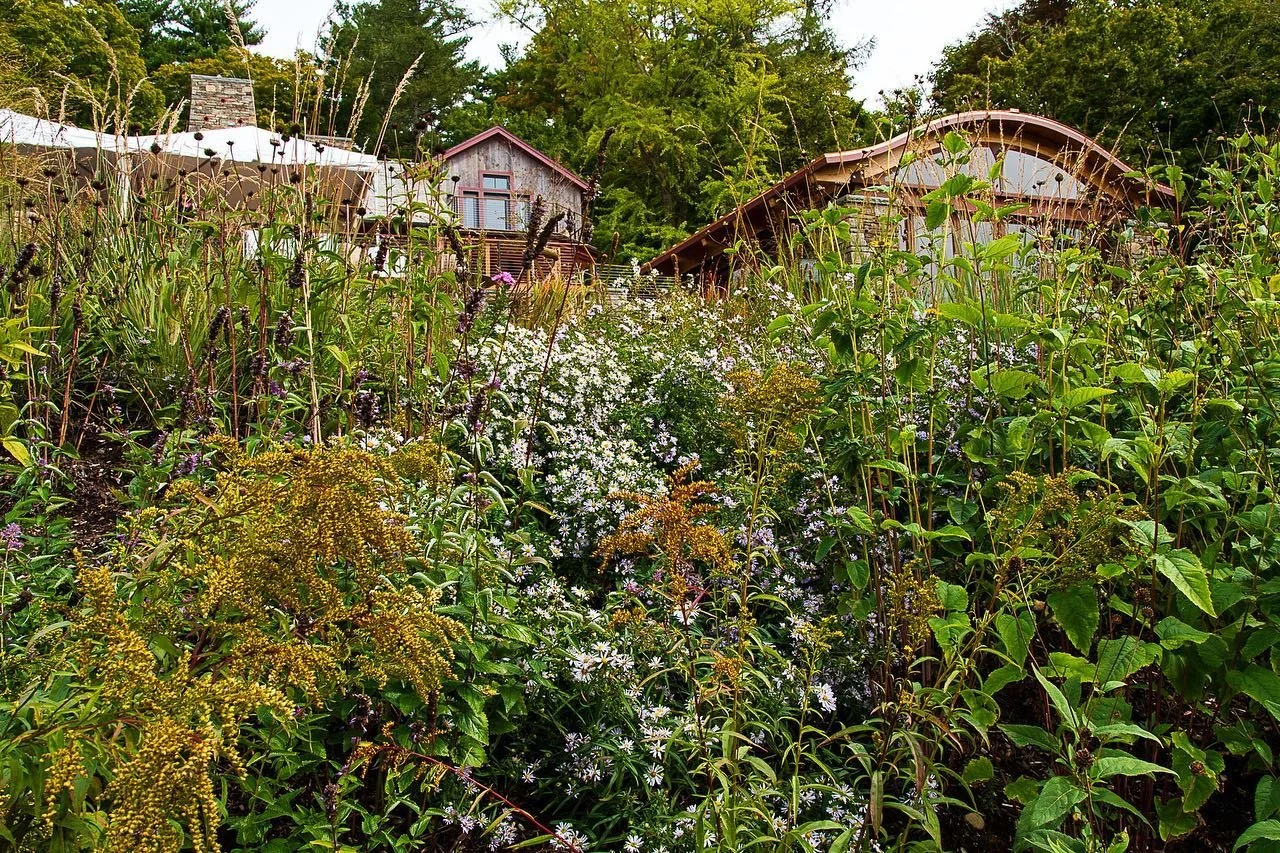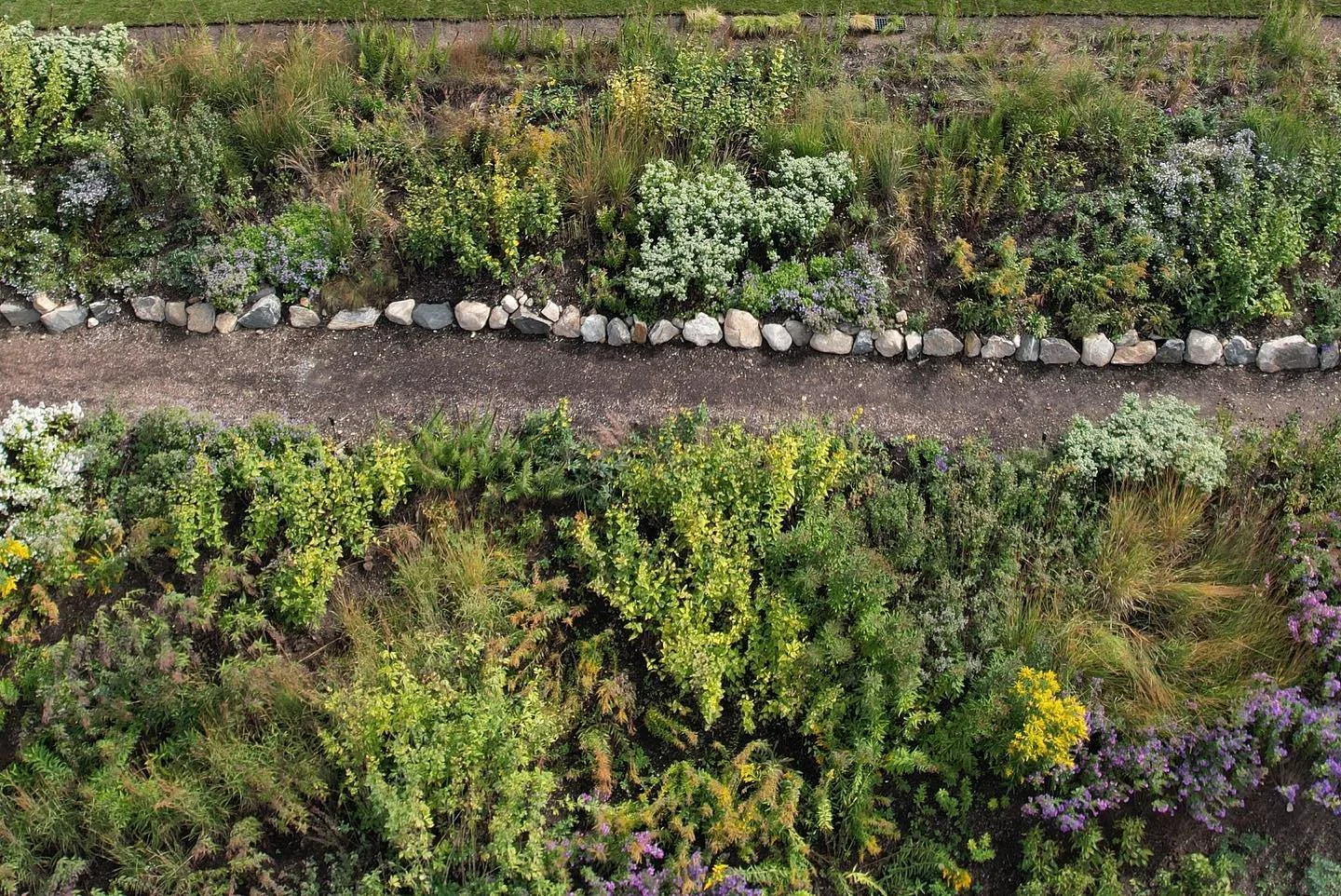Landscape Reanimation
At times, an opportunity emerges to reclaim a landscape from intensive mechanized care and foster a deep sense of unity between people, wildlife, and the land. This regenerative transformation not only creates a thriving and resilient biosphere but also re-establishes a shared connection to the environment.
Before European settlement, this land was likely managed by the Lenape people, who lived in harmony with their surroundings. Their stewardship was an act of reciprocity, giving back to the land as much as it provided for them. Practices such as controlled burns nurtured meadows and forests, encouraging native plant growth and creating essential habitats for wildlife. This balanced relationship between humans and the land ensured both biodiversity and communal well-being—a legacy of unity that modern restoration efforts aim to honor and emulate.
Perched on the slopes of the Hudson Highlands, this property showcases sweeping views of the Hudson River, Black Rock Forest, and Storm King State Park. These interconnected landscapes reinforce the idea of ecological unity, highlighting their role in supporting a vibrant and thriving ecosystem. The land itself recalls the serenity of the Hudson Valley before industrialization, with morning fog enveloping the valley, dramatic storms rushing in from the west, and awe-inspiring sunsets. It is a place of reflection, connection, and transcendence.
This 5.5-acre property had been conventionally managed with a nearly 2-acre mowed lawn, heavy pesticide and herbicide use, non-native ornamental plants, extensive chain-link fencing, invasive species, and poor integration across different areas. Additionally, nearly 7 million gallons of rainwater flowed through the property annually, with no efforts to retain or repurpose it, and the NYC Aqueduct ran along the lower boundary of the site.
Reclaiming this land was a multi-disciplinary effort, involving expertise in design, carpentry, stonework, engineering, stormwater management, erosion control, large-scale lawn-to-meadow conversions, succession forest planting, rewilding, pollinator garden creation, and edible landscaping. Each step of this transformation emphasized restoring harmony between the land and its inhabitants.
The first task was constructing a deer-proof fence using metal mesh to allow smaller wildlife to pass through while minimizing visual impact. Major earthworks followed, creating planting areas for a large-scale pollinator sun garden and reshaping the land to better manage rainwater. These efforts reflect a commitment to fostering both ecological and aesthetic unity.
Balancing immediate impact with long-term sustainability was a guiding principle throughout the project. How would the landscape thrive 30 to 50 years from now? What systems could be established to nurture future biodiversity? On the uphill portion of the property, mature pines, oaks, and beech trees had little understory or succession growth due to past mowing. To address this, nearly two dozen White Pines, American Hollies, and Junipers were planted as a second-generation forest, accompanied by mulch beds of ferns and Carex species. Privacy plantings of Rhododendrons, White Pines, American Hollies, Dogwoods, and Junipers were added to integrate the landscape seamlessly.
To boost biodiversity and stabilize erosion-prone slopes, approximately 13,000 pollinator plants—including milkweed, goldenrod, coneflowers, and bee balm—were introduced. These plants not only prevent soil erosion but also attract pollinators like butterflies and bees. Many have medicinal properties, serving both ecological and human communities. A Miyawaki forest was established to rapidly reforest a lawn area, and a multi-year process was initiated to convert a large lawn into a meadow through native seed dispersal and specialized mowing. Mow paths and bridges over swales encourage contemplative walks, fostering a sense of unity with nature.
Managing stormwater was another critical step. Situated on a hillside, the property experienced significant water flow during heavy rains. Partnering with ON Engineering, hydraulic calculations informed the construction of nearly 1,000 feet of swales. These structures retain water, preventing erosion while providing irrigation for native plantings. Along the swales, 20 White Oaks and Red Maples were planted, offering a windbreak and vibrant fall colors.
An edible landscape was also established, featuring a linear orchard with Pawpaws, Asian Pears, Apples, Nanking Cherries, Persimmons, Raspberries, Highbush Blueberries, and Elderberries. These plants nourish both humans and wildlife, providing food and shelter for birds and pollinators, while enhancing the ecosystem’s interconnected balance. A lowbush Blueberry patch near the house offers easy access for family and friends, symbolizing the unity between personal enjoyment and ecological care. Boulder retention walls and a natural stone staircase were also constructed, further blending functionality with the landscape’s character.
This project exemplifies how regenerative landscaping can unify people, wildlife, and the environment. By transforming a heavily altered property into a biodiverse sanctuary, it honors the principles of harmony, stewardship, and interconnectedness that will sustain the land for generations to come.







